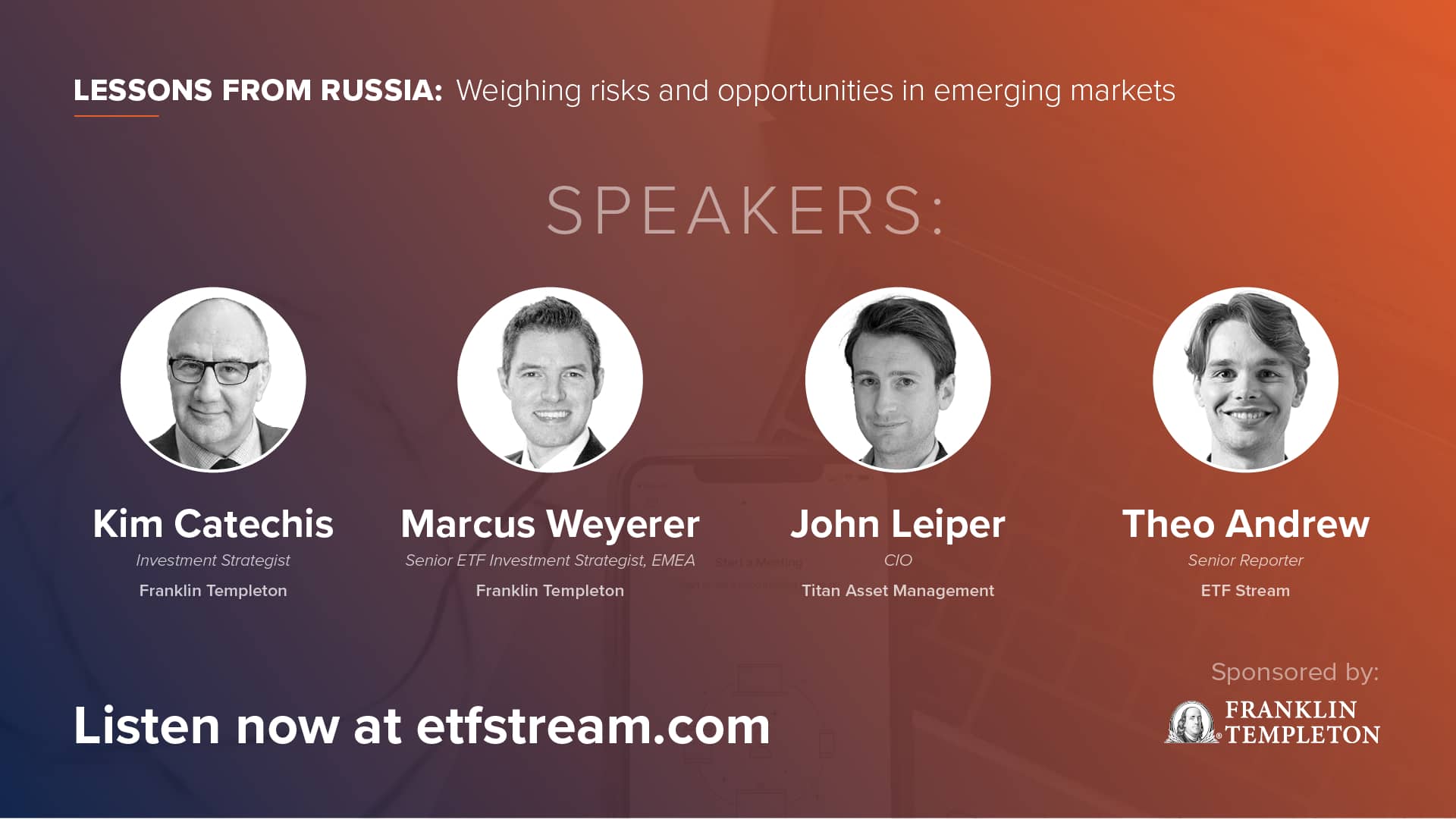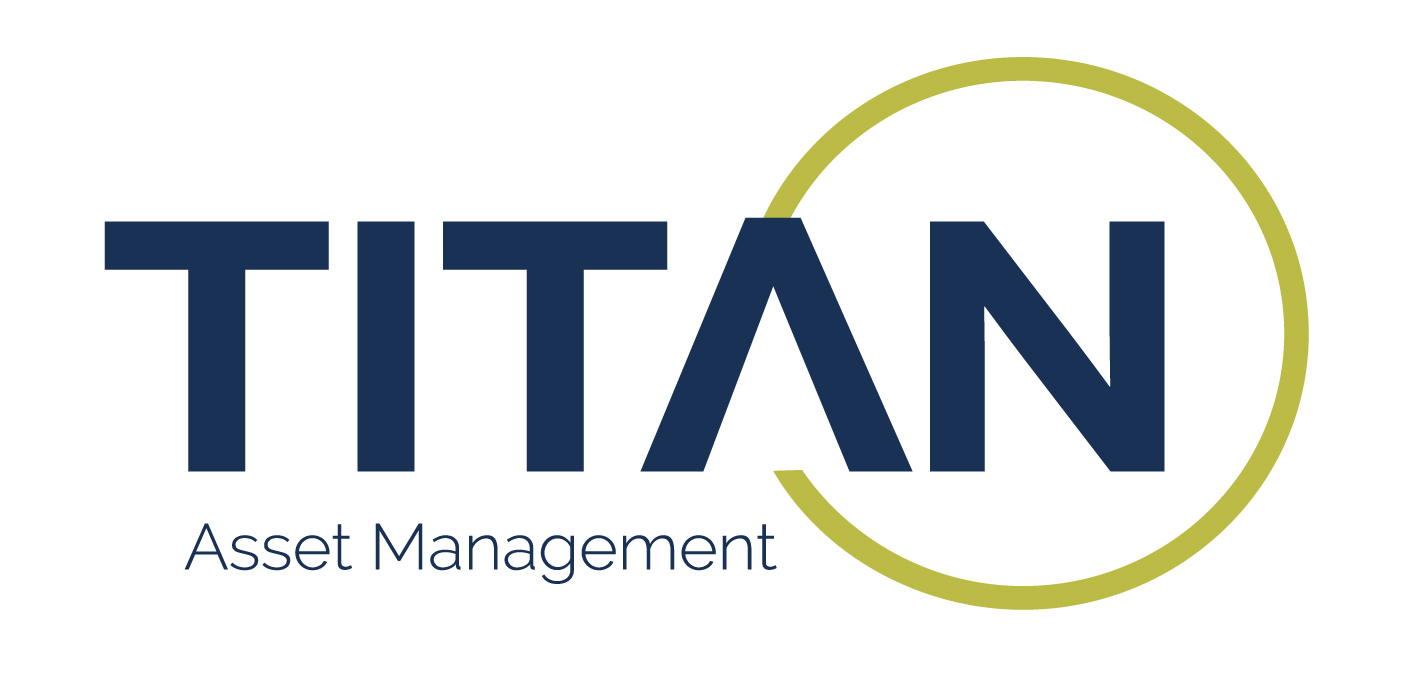The impacts of COVID-19 and Russia’s invasion of Ukraine, how to disaggregate emerging markets (EM) and the evolution of single country exposures were the topics discussed at ETF Stream’s recent webinar in partnership with Franklin Templeton.
The webinar, titled Lessons from Russia: Weighing risks and opportunities in emerging markets, began by reviewing the eventful macro backdrop and the effect this had on the role of EM.
Kim Catechis, investment strategist at Franklin Templeton, said investors have enjoyed a “brilliant 30-to-40-year period” but warned the Russia-Ukraine war has “raised the decibel level on an already fraught situation” regarding inflation – and supply chains in particular.
“What I am most concerned about is food price inflation,” Catechis said. “Food prices do not react to interest rates and central banks are ill-equipped to deal with food price inflation.”
The risks surrounding food security and inflation in the context of the Russia-Ukraine conflict are particularly pronounced in EM. For instance, just under 40% of India’s and almost half of the Philippines’ inflation baskets are made up of food goods.
Elsewhere, Brazil enjoyed a strong start to the year but remains a heavy net importer of fertiliser, a supply chain that relies heavily on Russia given it is the largest exporter of fertiliser by around half a billion dollars, according to the Observatory of Economic Complexity.
John Leiper, CIO at Titan Asset Management, argued while the invasion of Ukraine is significant, it is only the latest episode in a series of tensions and aggressions between the west, Russia and China.
He added: “The war could have far-reaching consequences and create a shift from global interconnectivity to a focus on security. From global capitalism to a less globalised, more fragmented world with a more structural pickup in inflation.
“That outlook really puts a magnifying glass on emerging markets. Amid increasing volatility, it will be increasingly important for investors to ‘look under the bonnet’ to identify idiosyncratic risks.”
How to disaggregate EM
Moving a step down from broad EM exposure, Leiper noted the use of acronyms to group together developing countries – such as ‘BRICS’ and ‘CIVETS’ – but warned these often involve an “element of marketing and trying to package things up” and he instead favours a more granular approach.
While noting volatility is now far higher than it was during the pre-pandemic era, Leiper continued: “We could go through a longer period of volatility before a new paradigm establishes itself. Do not be a hero, stick to the fundamentals if you choose to go more granular.”
Catechis added investors need to do sufficient due diligence when considering single country exposure, including research on topics such as political policy, sector makeup and even the educational attainment of its workforce.
“EM has always been an asset class with polarised returns. Depending on your investment horizon, you should think about what you expect to see coming,” Catechis said.
“You have opportunities in EMs which are overpriced and then those which are underreported and undervalued – the bad thing is you have to do the work to find out which ones these are.”
Agreeing, Marcus Weyerer, senior ETF investment strategist EMEA at Franklin Templeton, said investors should be mindful of sector biases such as Brazil and its focus on commodities and Taiwan and South Korea with their specialisation in tech components such as semiconductors.
Evolution in single country exposures
Overall, though, Weyerer argued investors are increasingly looking to disaggregate their EM exposure as they become more comfortable with more concentrated plays.
“The benefits of disaggregating now outweigh the costs versus 30 years ago where info, access and trading costs were a burden. These costs and product costs have come down.”
Speaking on where investor interest has been directed, Weyerer said demand for Brazil exposure has been strong as the country has largely benefited from Russia being shut out of international markets.
Meanwhile, he noted interest in China is being discussed with clients, though most activity remains on the sell-side for now. Although China equity valuations are now at potentially attractive levels, Weyerer noted “in short term moments of panic, fundamentals do not matter to an extent”.
Wrapping up the conversation, Catechis addressed what he viewed as red herrings such as EM political policy risk.
For instance, while much has been made of the Chinese Communist Party’s (CCP) intervention in its country’s tech sector and its impact on valuations, Catechis pointed out most governments intervene in markets and often get it wrong. In fact, at one point the UK changed the tax treatment of North Sea oil 19 times in a matter of years.
In a similar vein, Leiper said EM securities are often perceived as falling down on ESG data due to a lack of formalised reporting. On this, he suggested “the over-arching factor in ESG is quality” – so those seeking an ESG overlay to their EM exposures could do worse than using quality as a proxy.
Related articles




